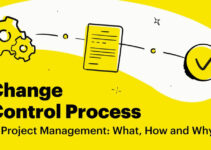The 4Ps of change management comprise people, purpose, process, and part or performance; it outlines the framework for effectively dealing with the organizational transition. The framework of the 4Ps allows you to analyze the nature of changes and comprehend why changes play a key role in the growth and success of the company. Today, we’ll discuss the 4Ps of change management 7Ps; the steps involved in analyzing the framework; advantages, and disadvantages.
7Ps of Change Management 4Ps
- Plan – developing steps, timeline, and schedule for the change project
- Picture – visualizing the changed state after implementing the changes
- Part – allocating the role and responsibilities while executing changes
- People – recognizing the people involved in the change process
- Purpose – clearly defining the goals and objectives that you want to achieve for the change project
- Process – steps, and stages involved in the change project
- Performance – evaluating and monitoring the performance of the change project
Steps Involved in Analyzing the 4Ps Framework 7Ps
- Recognize the targeted project that is significant and familiar
- Know the purpose and the outcomes that you want to achieve; new product, increasing sales or revenue
- Things you would change and how it impacts the company, roles, jobs, and organizational structure
- Change team members that would implement the changes; beware of the affected individuals
- Developing the context of the project; reasons for change; things you’re changing; and their impact
- Creating a connection among all of these stages; so that the people could adapt changes
- Clarify the position of change management project as a solution for the betterment of the company
4Ps of Change Management 7Ps
Let’s discuss the 4Ps of change management; they’re as follows;
People
People play a key role in the change project. The change leaders should recognize all those people and team members affected by the change project. You have to make sure that you are responding to their concerns and queries. If you engage with people and involve them in the change process, then it would increase the acceptance rate, decrease the resistance, and amplify the success of the change project.
Some of the main strategies and practices that would help you to involve people in the change project are as follows;
- Communicating with people about the change; giving reasons for the change project, and offering the benefits of the change initiatives
- Engaging with them by listening to their feedback about the changes
- Offering support and training to improve their change adoption rate and decrease the resistance level
- Recognizing the change adopting people and rewarding the early adoption to boost the morale of others
Purpose
Change leaders and the company’s management should clearly define the purpose of the change initiative while communicating changes with employees and stakeholders. Clear purpose gives the company direction and helps the company to streamline its goals, objectives, mission, and vision. Most importantly, it gathers support for the change initiative among stakeholders and ensures that they comprehend the significance of the change project.
While setting up the purpose, goals, and objectives; make sure they follow the SMART formula;
- Specific
- Measurable
- Achievable
- Relevant
- Time-focused
Process
The change process is significant for the change project. It comprises of following;
- Defining the scope of the change plan
- Setting up the timeline and schedule
- Allocating resources for the change project
- Recognizing potential risk factors
- Developing a strategy to decrease the risk
The change process comprises dividing the change project into smaller and more manageable steps. It allows you to make sure that the change project keeps moving forward in the right direction so that you can measure its results. While developing the change process plan, you should keep in mind the following;
- Setting up the timeline and schedule
- Goals and milestones for every stage
- Allocating responsibilities for every phase
- Making them flexible enough to make changes
Performance
Measuring the performance of the change project lets managers know that the changes are going as planned and what type of adjustment they require. It allows you to recognize the problems and issues in the early stages before they jeopardize the whole project. However, if you evaluate the performance of the change project, then it helps you to earn the trust and confidence of stakeholders and makes sure that everyone is on board with the change program.
Advantages of the 4Ps of Change Management
Let’s discuss the benefits and advantages of 4Ps and 7Ps of change management; they’re as follows;
- Offers you a comprehensive framework to effectively deal with changes
- Easy to comprehend and implement
- Flexible enough to adopt different types of changes
- Puts emphasis on engaging and connecting with people
- Focuses on improving the performance of employees; recognizing the
Disadvantages of the 4Ps of Change Management
Let’s discuss the challenges and disadvantages of 4Ps and 7Ps of change management; they’re as follows;
- Framework doesn’t work for every change situation
- Highly a time-consuming activity for measuring and planning
- Requires specific skills and expertise that you don’t have it
- Risk of employees’ resistance to change
Conclusion: Change Management 4Ps |7Ps of Change Management
After an in-depth study of the 4Ps of change management; we have realized that the 7Ps of change management offer you a clear framework for executing changes. If you are learning about the 7Ps of change management; then you should keep in mind the abovementioned people, process, purpose, plan, part, performance, and plan.
Ahsan is an accomplished researcher and has a deep insight in worldly life affairs. He goes Live 3 days a week on various social media platforms. Other than research writing, he’s a very interesting person.


